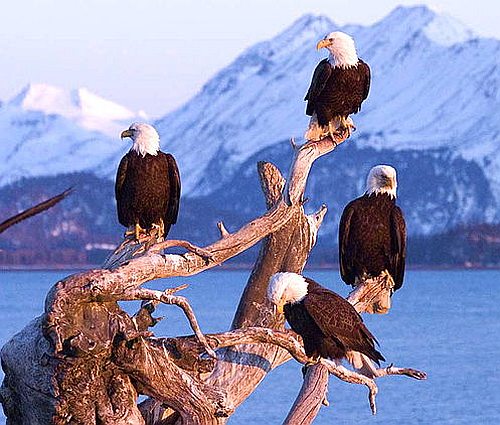 |
Diverse and abundant wildlife are central to Alaska’s economy and people. Large, unfragmented land, little development, and relatively pristine environmental conditions make Alaska well known for its abundant wildlife.
The state can boast of a rich avian diversity with over 430 species of birds including the largest bald eagle population in the nation. It also hosts the brown bear, considered to be the biggest carnivorous land ... Over 1,000 vertebrate species are found in the state, sometimes in huge numbers.
More than 900,000 caribou roam in 32 herds across vast tundra landscapes. On the Copper River Delta alone, five to eight million shorebirds stop to forage and rest each spring on their way to arctic breeding grounds. |
| Alaska has 32 species of carnivores, more than any other state. Denali’s Park Road offers a solid chance to see Alaska’s big 5: wolves, moose, grizzly bears, Dall sheep, and caribou. The 95-mile stretch of road is only accessible by park buses, which means traffic is relatively low, and that lends itself to more wildlife activity.
About 40,000 bald eagles live in Alaska—that’s more than half of North America’s total population. This means you have a great chance of seeing bald eagles when you’re here. Typically, eagles congregate along rivers where they have easy access to their favorite meal: fish.
Alaska's wildlife species are a hallmark of the state. It is home to large carnivores; is favored by migratory birds, and miles of shoreline offer habitat for abundant marine life. From grizzly bears, polar bears, moose, Dall sheep, mountain goats and many, many more, tourists and hunters make Alaska a mecca experience. |